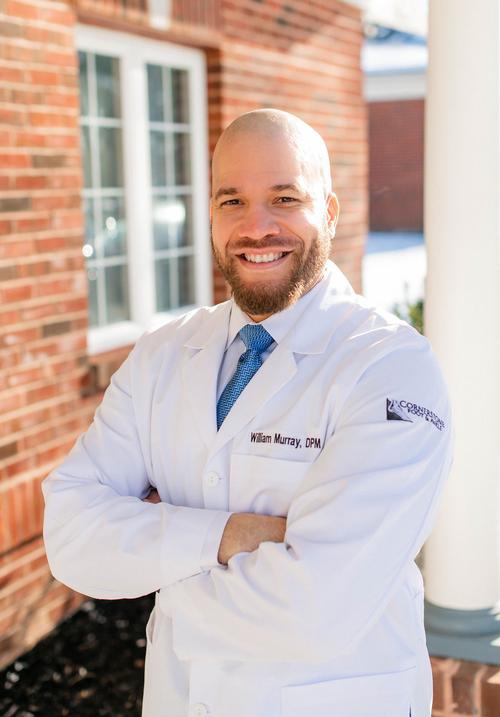“Don’t cross your eyes, they’ll stay that way!” Old wives’ tales and myths like that example are fun to laugh at. We believed them as children. “Step on a crack and you’ll break your mother’s back.” But there are other myths that are no laughing matter, especially when they involve your health.
From bunions to broken toes, our foot and ankle surgeons at Cornerstone Foot and Ankle we have heard it all. Our physicians treats patients at offices in Glassboro, Sewell, Woodbury, Cherry Hill, Marlton, and Mount Holly.

Here are five myths about foot care our physicians hear in the office frequently, and the realities behind them.
Myth: Cutting a notch (a “V”) in a toenail will relieve the pain of ingrown toenails.
Reality: When a toenail is ingrown, the nail curves downward and grows into the skin. Cutting a “V” in the toenail does not affect its growth. New nail growth will continue to curve downward. Cutting a “V” may actually cause more problems and is painful in many cases.
Myth: My foot or ankle can’t be broken if I can walk on it.
Reality: It’s entirely possible to walk on a foot or ankle with a broken bone. “It depends on your threshold for pain, as well as the severity of the injury,” says Dr. Miller. But it’s not a smart idea. Walking with a broken bone can cause further damage.
It is crucial to stay off an injured foot until diagnosis by a foot and ankle surgeon. Until then, apply ice and elevate the foot to reduce pain.
Myth: Shoes cause bunions.
Reality: Bunions are most often caused by an inherited faulty mechanical structure of the foot. It is not the bunion itself that is inherited, but certain foot types make a person prone to developing a bunion. While wearing shoes that crowd the toes together can, over time, make bunions more painful, shoes themselves do not cause bunions.
Although some treatments can ease the pain of bunions, only surgery can correct the deformity.
Myth: A doctor can’t fix a broken toe.
Reality: Nineteen of the 26 bones in the foot are toe bones.
“What I tell patients is, there are things we can do to make a broken toe heal better and prevent problems later on, like arthritis or toe deformities,” Dr. Miller says.
Broken toes that aren’t treated correctly can also make walking and wearing shoes difficult. A foot and ankle surgeon will x-ray the toe to learn more about the fracture. If the broken toe is out of alignment, the surgeon may have to insert a pin, screw or plate to reposition the bone.
Myth: Corns have roots.
Reality: A corn is a small build-up of skin caused by friction. Dr. Miller says many corns result from a hammertoe deformity, where the toe knuckle rubs against the shoe. The only way to eliminate these corns is to surgically correct the hammertoe condition.
Unlike a callus, a corn has a central core of hard material. But corns do not have roots. Attempting to cut off a corn or applying medicated corn pads can lead to serious infection or even amputation. A foot and ankle surgeon can safely evaluate and treat corns and the conditions contributing to them.
Cornerstone Foot & Ankle is a full service foot and ankle specialty office with locations in Sewell, Cherry Hill, Marlton, Mt. Holly, Woodbury, and Glassboro; serving the South Jersey region. We offer a full suite of services including surgery, fracture care, fungal nail care, diabetic foot care, pediatric podiatry, custom braces and orthotics, wound care, limb salvage, and treatments for arch pain, heel pain, and sports injuries; just to name a few. If it hurts below your knee, we can help you! CALL NOW or request your appointment online TODAY!

